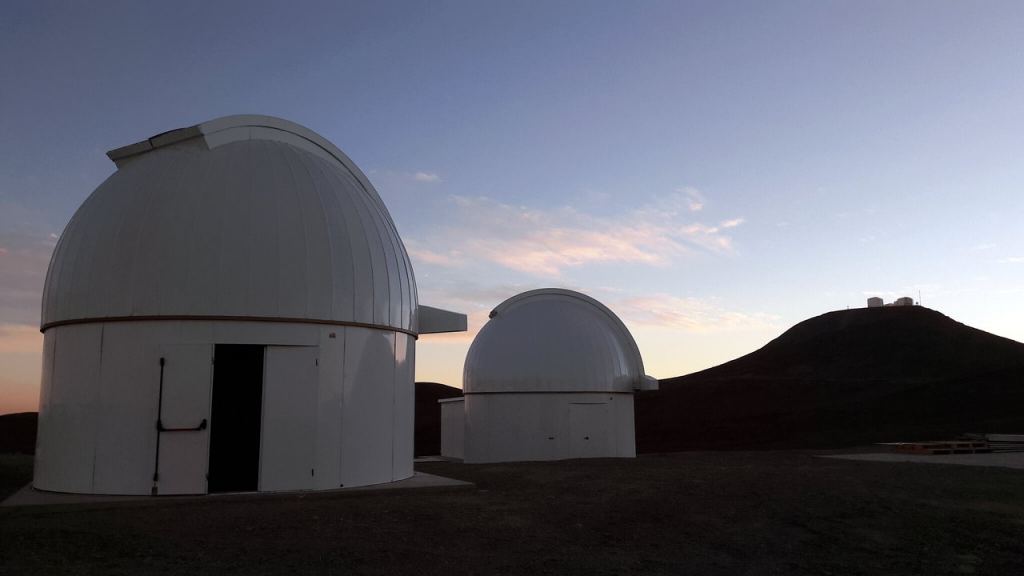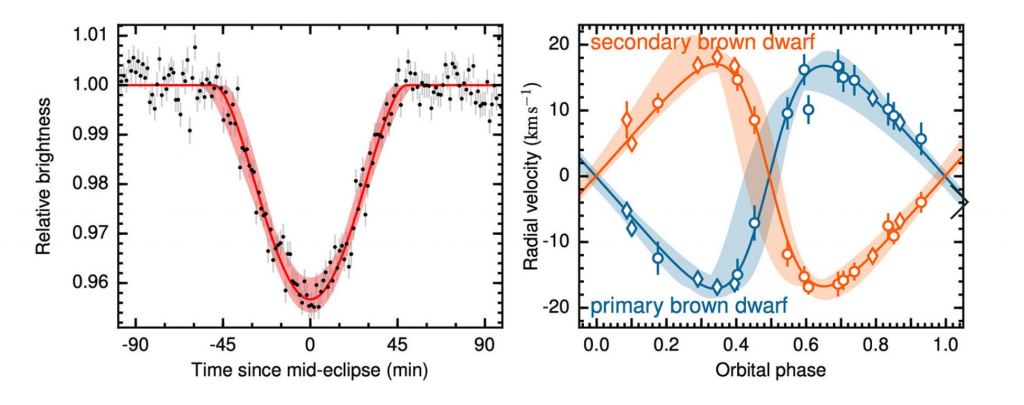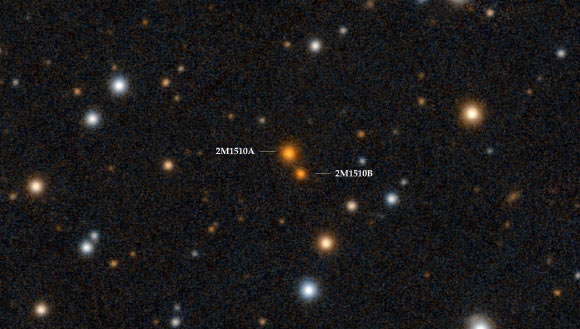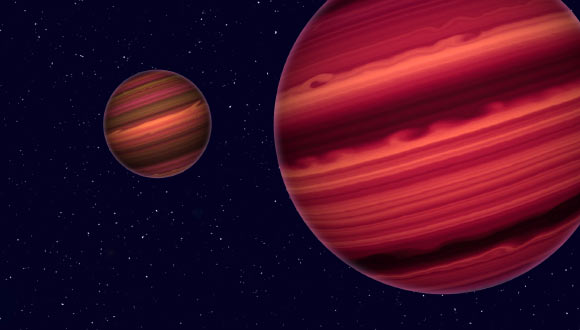Sometimes, the strangest stellar finds are right in our own cosmic neighborhood. Astronomers recently made an interesting discovery while putting a new set of telescopes through their paces: an eclipsing pair of sub-stellar brown dwarfs.
The find is 2MASSW J1510478-281817, also referred to as 2M1510. The ‘2MASS’ acronym in the designation refers to the 2-Micron All-Sky Survey. The pair is located 119 light-years (36.6 parsecs) distant in the constellation of Libra the Scales, near its border with Lupus the Wolf.
The survey telescopes that made the find are part of SPECULOOS (Search for habitable Planets EClipsing ULtra-COOl Stars) project, a battery of four 1-metre diameter Ritchey-Chrétien telescopes located at the Paranal Observatory complex in Chile. A fifth counterpart telescope named Artemis located in the Canary Islands is part of the SPECULOOS North survey.

The two brown dwarfs orbit each other once every 21 days, with 2M1510Aa the slightly more massive of the two at 40 Jupiter masses, versus its companion 2M1510Ab, at a leaner 39.3 Jupiter masses. Both are M-type brown dwarfs, and orbit a mutual barycenter only 0.063 AU (5.9 million miles or 9.5 million kilometers) apart.
A third, more distant brown dwarf designated 2MASS J15104761-2818234 (2M1510B) is also part of the complex system. This third object orbits at 250 Astronomical Units (AU) from the primary pair. That’s over six times the average distance from the Sun to Pluto.
“The SPECULOOS program is looking for exoplanets transiting very low mass stars and brown dwarfs, and a pair of brown dwarfs right next to each other in the sky seemed like a good target,” says Adam Burgasser of UC San Diego, an author on the study. “We were surprised to discover that it was really three brown dwarfs!”
The find was reported in the recent journal of Nature: Astronomy. Researchers used the four 8.2-metre instruments that form the Very Large Telescope also located at Cerro Paranal, Chile in the Atacama Desert and the Near-infrared Spectrograph (NIRSPEC) located at the Keck Observatory on the summit of Mauna Kea in Hawaii to verify the find. Both are equipped to measure velocities in the infrared, the band where brown dwarfs peak. The observed eclipsing event lasted about 90 minutes.

“It’s (2M1510) part of the SPECULOOS target list that contains all ultracool dwarfs whose distance is smaller than 40 parsecs as measured by the Gaia satellite and whose radius is smaller than 0.15 solar radii,” Says Michaël Gillon (University of Liege, Belgium). “With SPECULOOS, we should detect several similar systems in the next few years, including new potentially habitable Earth-sized planets well-suited for detailed atmospheric characterization with James Webb.”
Brown dwarfs occupy the zone between full-fledged stars at 80 times the mass of Jupiter (7.7% the mass of the Sun), and 13 Jupiter masses. The 2M1510 pair are both M-type brown dwarfs, occupying a space right down the center of this mass range. Though brown dwarfs aren’t massive enough to sustain full-fledged fusion via the proton-proton chain like red dwarf stars, they can still slowly simmer using low-grade deuterium fusion at their cores. The average surface temperature for an M-dwarf is 2,600 Kelvin (2,300 degrees Celsius).
Though brown dwarfs are faint targets, they’re also probably one of the most common objects in the Universe.
The discovery represents only the second such eclipsing brown dwarf pair known. The first is the resolved pair 2MASS J05352184-0546085AB in the Orion Nebula, a relatively young pair at only an estimated one million years old.
Another intriguing brown dwarf pair were found in 2003 orbiting the main sequence star Epsilon Indi.
The SPECULOOS survey will specialize in targeting exoplanets in the habitable zones of cool dwarf stars. One such dwarf star harboring exoplanets named TRAPPIST-1 broke big in the news in 2015, and such ‘mini-solar systems’ may be common in the cosmos.
“2M1510 was observed as part of SPECULOOS’s commissioning program,” says Burgasser. “Now the telescopes are up and running, and the team is monitoring several low mass stars and brown dwarfs to search for transiting exoplanets. We’re also following up (on) some of the candidate exoplanet systems discovered by the TESS (the Transiting Exoplanet Survey Satellite) mission. Anytime we are able to look at the Universe in a new way, we often discover something exciting or unanticipated.”
2M1510 is also a member of the Argus Moving Group of stars. This 45 million years old cluster of relatively young stars was discovered in 2018. Membership in a stellar association or moving group is betrayed by stars sharing a common proper motion across the sky. The Hyades in the constellation Taurus are a famous nearby stellar association, as is the Ursa Major Moving Group, which contains most of the stars in the Big Dipper asterism.
The discovery is important because not only does the membership of the brown dwarf pair as part of the Argus Moving Group pin down the age of the couple, but their physical association, along with the fact that they mutually eclipse along our line of sight, allows astronomers to further characterize the two in terms of mass. Sub-stellar brown dwarfs such as the 2M1510 pair are thought to be very similar to massive exoplanets.

This intriguing discovery allows researchers to not only characterize large mass exoplanets, but put models of how brown dwarfs evolve and cool to the test.
“Our measurements tell us that the mass, radius and age are explained very well by models whose foundations are 30 years old,” says Amaury Triaud of the University of Birmingham, lead author on the study. “This is remarkable. It also tells us that the luminosity of brown dwarfs is a little off compared to models. So we now know the models are very good, but that we still need to make them better.”
It would be curious to see such a pair up close: no analog for a brown dwarf exists in our solar system. It will be interesting to watch what other discoveries will come out of the SPECULOOS survey in the near future.
-Lead image credit: Roberto Molar Candanosa & Sergio Dieterich, Carnegie Institution for Science.

